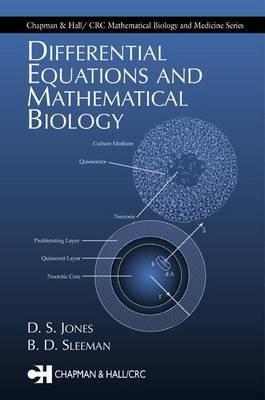Chapman & Hall/CRC Mathematical and Computational Biology
1 total work
Differential Equations and Mathematical Biology
by D. S. Jones and B D Sleeman
Published 5 January 1983
Over the past decade, mathematics has made a considerable impact as a tool with which to model and understand biological phenomena. In return, biology has confronted the mathematician with a variety of challenging problems which have stimulated developments in the theory of nonlinear differential equations. This book is the outcome of the need to introduce undergraduates of mathematics, the physical and biological sciences to some of those developments. It is primarily directed towards students with a mathematical background up to and including that normally taught in a first-year physical science degree of a British university (sophomore year in a North American university) who are interested in the application of mathematics to biological and physical situations. Chapter 1 is introductory, showing how the study of first-order ordinary differential equations may be used to model the growth of a population, monitoring the administration of drugs and the mechanism by which living cells divide. In Chapter 2, a fairly comprehensive account of linear ordinary differential equations with constant coefficients is given. Such equations arise frequently in the discussion of the biological models encountered throughout the text. Chapter 3 is devoted to modelling biological pheno mena and in particular includes (i) physiology of the heart beat cycle, (ii) blood flow, (iii) the transmission of electrochemical pulses in the nerve, (iv) the Belousov-Zhabotinskii chemical reaction and (v) predator-prey models."
